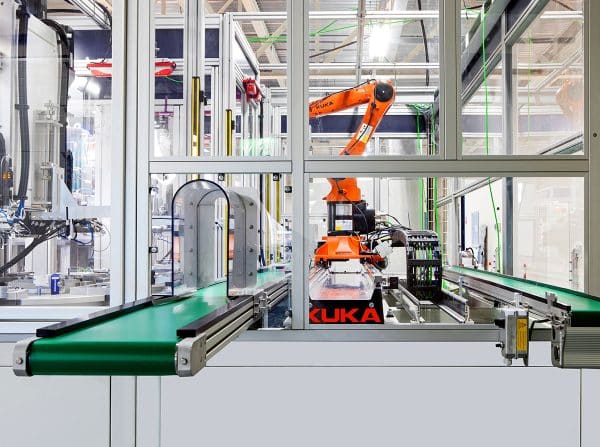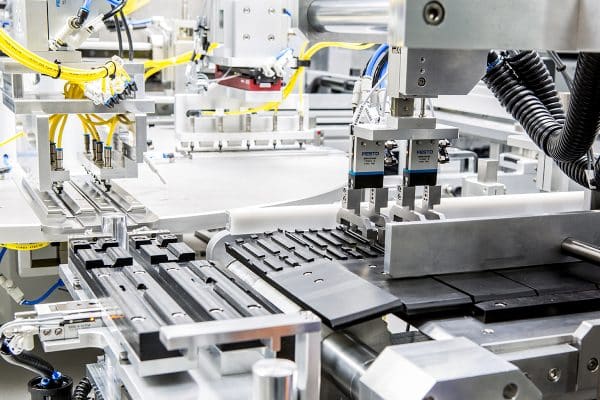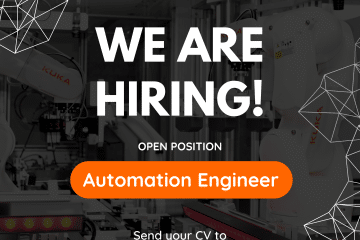Tailoring Solutions to Medical Device Manufacturing Challenges
Efficient product transfer solutions play a pivotal role in maintaining quality, efficiency, and safety across production lines. Whether it involves transitioning items between conveyor lines or from machinery onto conveyors for subsequent processing stages, the method of transfer must be meticulously designed to align with both the product specifications and operational requirements.
This tailored approach is essential for minimising waste, preventing bottlenecks, and mitigating downtime within the production process. When selecting a transfer system for an automation project, our design engineers have five key considerations that help them choose the ideal transfer system for a production environment.
1. Precision and Accuracy
In medical device manufacturing, precision is non-negotiable. Our engineers ensure that the chosen transfer system can accurately position and handle delicate components or devices. Whether it’s a rotary transfer system, linear transfer system, or a combination of both, the system must offer high levels of repeatability and positioning accuracy to meet stringent quality standards.
2. Cleanliness and Sanitsation
Medical device manufacturing environments require strict adherence to cleanliness and sterilization protocols. Therefore, the product transfer system must be designed with materials and features that facilitate easy cleaning and maintenance. Systems with smooth surfaces, minimal crevices, and corrosion-resistant materials are preferable to minimize the risk of contamination and ensure compliance with regulatory requirements.
3. Flexibility and Scalability
The medical device industry is dynamic, with evolving product designs and changing production demands. Engineers should opt for transfer systems that offer flexibility and scalability to adapt to future requirements. Modular designs, configurable setups, and the ability to accommodate varying product sizes and configurations are essential factors to consider. Additionally, scalability ensures that the transfer system can seamlessly integrate with existing production lines and accommodate increased production volumes as needed.
4. Regulatory Compliance
Medical device manufacturing is subject to stringent regulatory standards and guidelines, such as those set forth by the FDA and ISO. When selecting a product transfer system, engineers must ensure that it complies with relevant regulatory requirements. This includes factors such as material compatibility, documentation traceability, and adherence to industry-specific standards for safety and performance. Choosing a transfer system from a reputable manufacturer with a track record of regulatory compliance can mitigate risks and streamline the validation process.
5. Integration and Support
Integrating a new product transfer system into an existing production environment can be complex. Engineers should partner with a provider like DesignPro Automation, who specialises in building automated production solutions and integrating advanced technologies. DesignPro Automation offers expertise in customising transfer systems to meet specific requirements, seamless integration with other automation components, and comprehensive support throughout the implementation process. Their experience in medical device manufacturing ensures that the chosen transfer system aligns with industry best practices and maximizes operational efficiency.
“We aim to not only address our customers’ current production challenges but also anticipate their future needs. By gaining a deep understanding of their existing operations, we can tailor transfer solutions that not only solve immediate issues but also seamlessly adapt to their evolving product development strategies. This proactive approach ensures that our clients stay ahead of the curve, maximizing efficiency, and agility in their manufacturing processes.”
DAMIEN FLAHERTY
Design Manager, DesignPro Automation
Choosing the right product transfer system is critical for ensuring the success of medical device manufacturing operations. By considering factors such as precision, cleanliness, flexibility, regulatory compliance, and integration support, process engineers can make informed decisions that optimise production efficiency and product quality.
Partnering with an experienced automation provider can further enhance the process, providing tailored solutions that meet the unique needs of medical device manufacturing environments. With the right transfer system in place, medical device manufacturers can achieve their production goals while maintaining the highest standards of quality and compliance. Should we mention the future of this type of technology – the Beckhoff XPlanar?
Have an automation project you’d like advice on?








